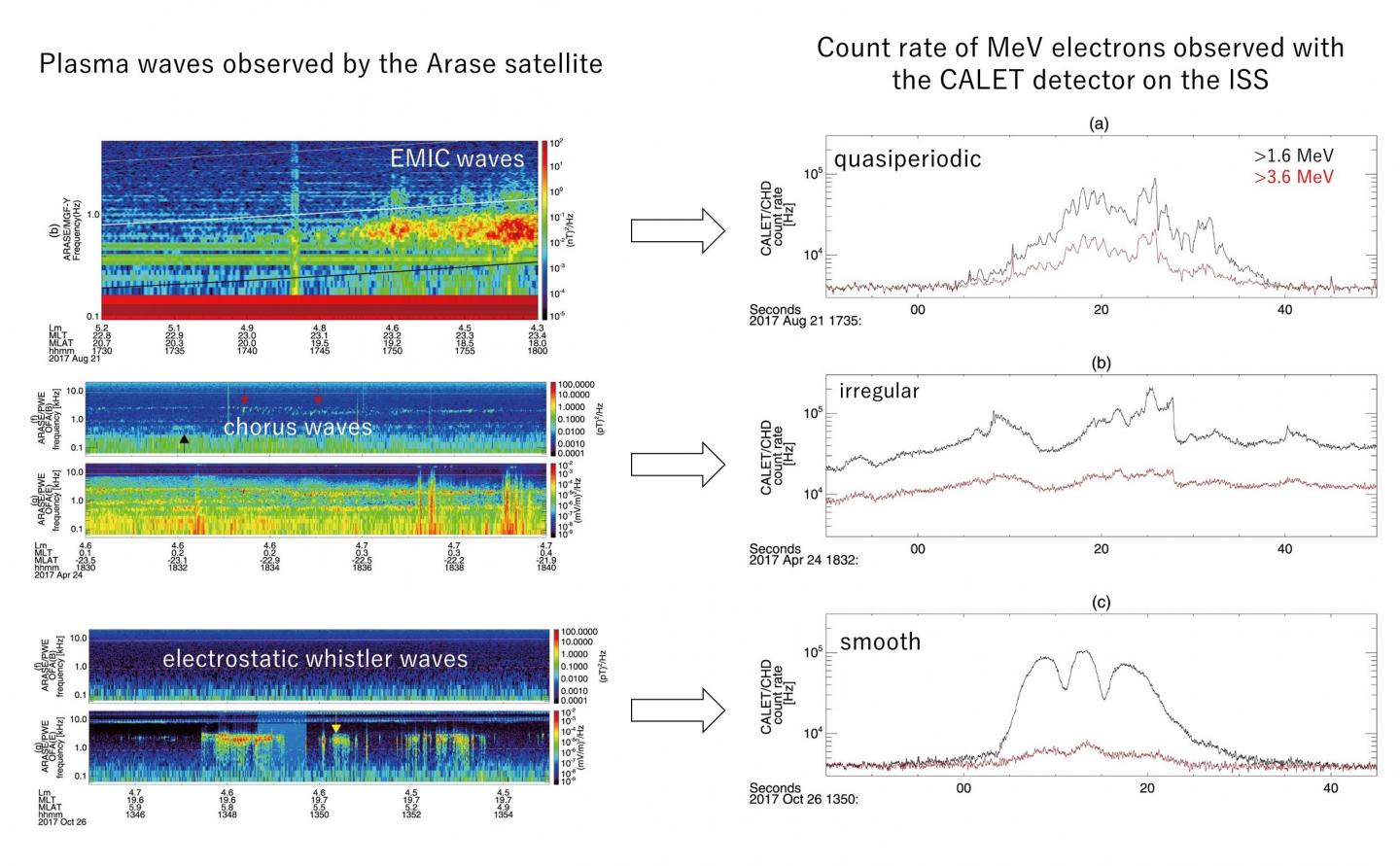Scientists have made significant progress in understanding the sources of radiation events that could impact human space-flight operations. Relativistic Electron Precipitation (REP) events are instances when high energy electrons move through areas of space at significant fractions of the speed of light. These REP events may pose challenges to human spaceflight, specifically during extravehicular activity (EVA).
These hazards motivate the question of whether REP events can be forecasted in order to avoid unnecessary human exposure to radiation. In order to predict REP events, their cause must first be determined.
A scientific team led by researchers at the National Institute of Polar Research (NIPR) in Japan has made strides in answering that question. Their findings were published on August 14 in the Journal of Geophysical Research: Space Physics.
Ryuho Kataoka, the lead author of the study and an associate professor at NIPR, pinpointed the cause of REP events and emphasized that REP events must be accounted for in human spaceflight missions.
“The importance of understanding REP events has been increasing since the REP events have been clearly identified at International Space Station (ISS),” Kataoka said. “REP events are important because they cause radiation dose during EVAs.”
It has been hypothesized that electromagnetic ion cyclotron (EMIC) waves play an important role in REP events at the ISS. It was still an open question, however, whether other mechanisms played a role in REP event generation. EMIC waves are electromagnetic waves that propagate through the plasma in Earth’s magnetosphere, causing disturbances in the charged particles within the plasma.
Using multiple sensors aboard the ISS, as well as data from the Arase satellite, the research group was able to show that at least three separate processes contributed to REP events. One is indeed EMIC waves. But the data also suggested two other sources: Whistler mode chorus waves and electrostatic whistler waves. Whistler mode waves can be excited by high energy electrons associated with auroral activities, such as the Northern Lights.
“It turned out that REP events at the ISS are caused not only by EMIC waves but also by whistler mode waves, which makes the space weather forecast more difficult,” Kataoka said.
With a better understanding of the physical causes of REP events, Kataoka and his team are working towards ways to predict future events. “The next step is the space weather forecast of REP events at the ISS by modeling different kinds of plasma wave activities. The ultimate goal is to obtain a unified theory to understand the interaction between energetic particles and plasma waves, and their impact of radiation dose on the atmosphere, space craft, and human beings.”
###
About National Institute of Polar Research (NIPR)
The NIPR engages in comprehensive research via observation stations in Arctic and Antarctica. As a member of the Research Organization of Information and Systems (ROIS), the NIPR provides researchers throughout Japan with infrastructure support for Arctic and Antarctic observations, plans and implements Japan’s Antarctic observation projects, and conducts Arctic researches of various scientific fields such as the atmosphere, ice sheets, the ecosystem, the upper atmosphere, the aurora and the Earth’s magnetic field. In addition to the research projects, the NIPR also organizes the Japanese Antarctic Research Expedition and manages samples and data obtained during such expeditions and projects. As a core institution in researches of the polar regions, the NIPR also offers graduate students with a global perspective on originality through its doctoral program. For more information about the NIPR, please visit: https:/
About the Research Organization of Information and Systems (ROIS)
The Research Organization of Information and Systems (ROIS) is a parent organization of four national institutes (National Institute of Polar Research, National Institute of Informatics, the Institute of Statistical Mathematics and National Institute of Genetics) and the Joint Support-Center for Data Science Research. It is ROIS’s mission to promote integrated, cutting-edge research that goes beyond the barriers of these institutions, in addition to facilitating their research activities, as members of inter-university research institutes.
